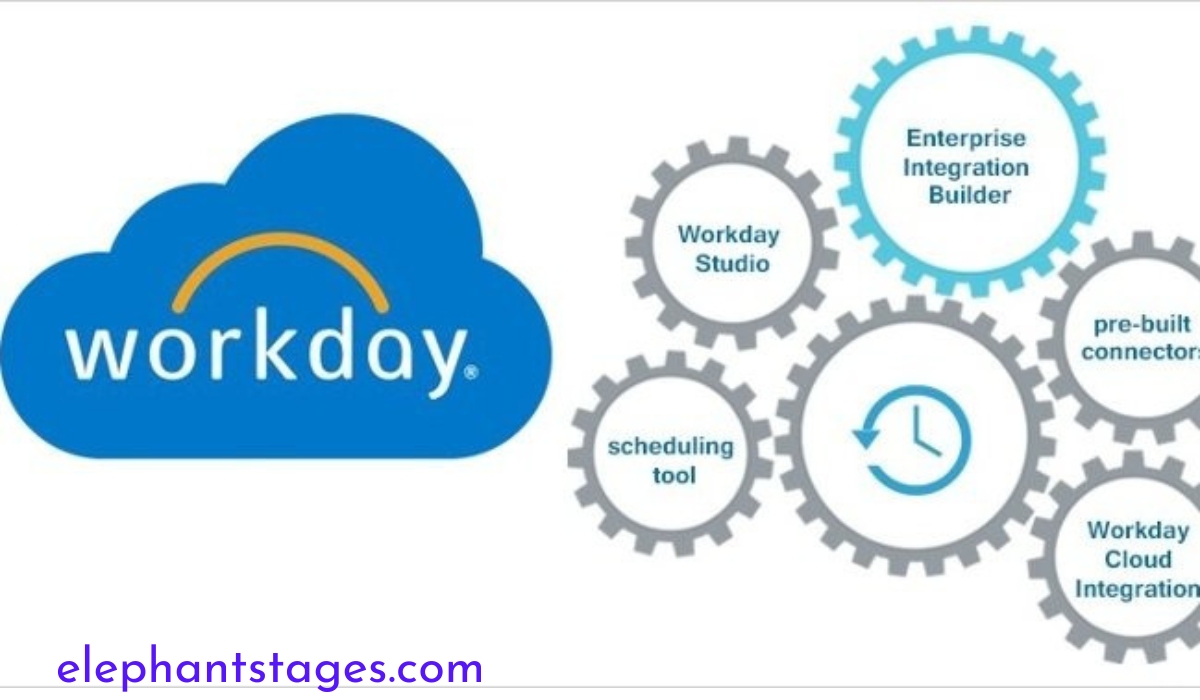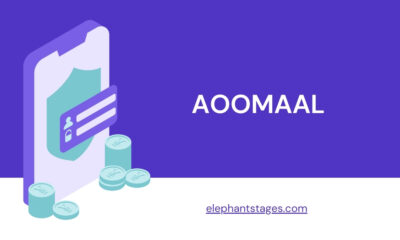Tech
Things to Be Considered While Using Workday Testing Tool

Workday has become a prominent provider of Cloud-based financial, planning, and human capital management software in a field of enterprise software solutions. Robust testing is becoming more and more important as businesses use Workday to automate processes. Here comes into picture the Workday testing tool for thorough testing of Workday setups and making integrations easier. However, there are some aspects that businesses must be aware of to properly utilize its potential.
1. Test Data Management
A good testing endeavor must have effective management of test data. Assuring the availability of realistic, representative, and safe test data sets is crucial when utilizing the Workday testing tool. There are a lot of hazards associated with using production data, including breaches of data privacy and inadvertent changes to operational systems. On the other hand, testing scenarios may be erroneous or incomplete if insufficient or contrived test data is used.
2. Test Scenario Design and Coverage
The caliber and thoroughness of the test scenarios have a major impact on the efficacy of the Workday testing tool. It is imperative to create test cases that address a broad spectrum of integration points, edge situations, and functional requirements. Testing coverage gaps may result from failing to fully evaluate and take into account intricate business processes, data flows, and system interdependencies, which could expose the company to risks and vulnerabilities.
3. Automation and Continuous Testing
It is crucial in today’s competitive business environment to provide high-quality software upgrades and promptly adjust to changing requirements. Businesses may streamline their testing processes and shorten a time-to-market by utilizing Workday testing tool’s robust automation features. Teams may test integrations more consistently and efficiently by using automation to carry out load and performance testing, regression testing, and integration validation.
4. Reporting and Traceability
Testing that works requires more than just running test cases; it also requires thorough reporting and traceability. With the powerful reporting features offered by the Workday Testing Tool, teams can record and examine test results, spot patterns, and clearly and succinctly convey findings to relevant parties. Traceability is also essential for preserving transparency throughout the testing procedure and guaranteeing adherence to legal and industry standards.
5. Training and Knowledge Sharing
Despite the Workday testing tool’s user-friendly interface, using it effectively calls for a certain degree of skill and understanding. To make sure that the testing teams are competent in utilizing the tool’s numerous capabilities and functionalities, organizations need to make significant investments in training programs. Additionally, encouraging a culture of information exchange inside the company can significantly improve the testing procedure as a whole. Teams may improve testing procedures, cut down on effort duplication, and preserve consistency across many projects and initiatives by promoting cooperation, information sharing, and the documenting of best practices.
YOU MAY ALSO LIKE
The Berbix BIPA Settlement: Redefining Biometric Data Privacy
Conclusion
Organizations may optimize the advantages of the Workday testing tool by closely examining these five factors: reporting and traceability, automation and continuous testing, test data management, test scenario design and coverage, and training and knowledge sharing. Opkey is one of the leading powerful automation tools for businesses looking for Workday testing. Its test discovery mines process logs, instantly identifying existing tests and coverage gaps. With one-click, Opkey increases coverage with no coding needed. The intuitive no-code test builder empowers any team member to create complex tests via drag-and-drop. Users can stay ahead with proactive impact analysis alerting them to tests impacted before production changes. Opkey’s self-healing scripts ensure tests won’t break when apps change. The teams can seamlessly collaborate on broken tests, automatically generate reports, and save valuable time – all within Opkey’s integrated platform.
Tech
Get365cvl: A Comprehensive Guide

I. Introduction
In the vast landscape of career advancement tools, Get365cvl emerges as a beacon of efficiency and effectiveness. This comprehensive guide aims to unravel the essence of Get365cvl, catering to both individuals and businesses alike.
What is Get365cvl?
Get365cvl is a cutting-edge platform designed to streamline the process of crafting professional resumes, cover letters, and preparing for interviews. It encapsulates a myriad of features and tools geared towards enhancing one’s career prospects.
Who is it for?
Get365cvl caters to a diverse audience encompassing individuals seeking employment opportunities, professionals aiming for career progression, and businesses striving for talent acquisition. Its versatility makes it indispensable for anyone navigating the competitive job market.
Key Benefits of Using Get365cvl
- Efficiency: With Get365cvl, users can expedite the resume-building process, saving valuable time and effort.
- Customization: The platform offers extensive customization options, allowing users to tailor their resumes and cover letters to specific job requirements with ease.
II. Understanding Get365cvl
Core Functionalities of Get365cvl
At its core, Get365cvl empowers users to create polished resumes and compelling cover letters that resonate with potential employers. Moreover, it provides comprehensive interview preparation resources, equipping users with the confidence to ace any job interview.
Breakdown of the Service
Get365cvl offers a multifaceted array of services, including:
- Resume Building: Users can leverage intuitive templates and editing tools to craft professional resumes tailored to their unique skill sets and experiences.
- Cover Letter Creation: Get365cvl facilitates the creation of persuasive cover letters that succinctly articulate the user’s qualifications and motivations.
- Interview Preparation: From mock interviews to expert tips, Get365cvl equips users with the necessary tools to excel in job interviews.
How Does Get365cvl Work?
- Sign-Up Process: Users can create an account on Get365cvl by providing basic information such as name, email, and password.
- Profile Building: Upon signing up, users are prompted to fill out their profiles, including their educational background, work experience, and skills.
- Utilizing Features: Get365cvl offers a user-friendly interface with intuitive features for resume building, cover letter writing, and interview preparation.
- Feedback Mechanism: Users can solicit feedback from peers or career experts to refine their documents and enhance their chances of success.
III. Using Get365cvl Effectively
Getting Started with Get365cvl
The sign-up process for Get365cvl is seamless and straightforward. Users can create an account in minutes, gaining access to a plethora of career-enhancing tools and resources.
Building a Strong Profile
A robust profile is the cornerstone of a compelling job application. Get365cvl guides users through the process of curating a comprehensive profile that highlights their qualifications and achievements effectively.
Exploring Get365cvl’s Features
- Resume Builder: Users can choose from a variety of professionally designed templates and customize them to suit their preferences.
- Cover Letter Creator: Get365cvl offers a range of cover letter templates tailored to different industries and job roles.
- Interview Preparation: From common interview questions to behavioral assessments, Get365cvl equips users with the knowledge and confidence to excel in interviews.
Tips and Tricks for Maximizing Results
- Utilize Templates: Leverage Get365cvl’s pre-designed templates to expedite the document creation process.
- Seek Feedback: Solicit feedback from peers or career professionals to fine-tune your resumes and cover letters.
- Stay Updated: Keep abreast of industry trends and job market dynamics to ensure your documents remain relevant and impactful.
IV. Get365cvl vs. The Competition
Comparison with Similar Services
Get365cvl stands out from the competition due to its user-friendly interface, extensive customization options, and comprehensive interview preparation resources. Unlike its counterparts, Get365cvl offers a holistic approach to career advancement, addressing every aspect of the job application process.
Pricing Structure
Get365cvl offers flexible pricing plans to accommodate varying user needs. While some features may be accessible through free trials, premium plans unlock the full suite of tools and resources, ensuring maximum value for users.
User Reviews and Testimonials
The efficacy of Get365cvl is corroborated by glowing user reviews and testimonials. Users commend its intuitive interface, robust features, and tangible results in securing employment opportunities.
YOU MAY ALSO LIKE
Unlocking Business Excellence with HQPotner
V. Conclusion
In conclusion, Get365cvl emerges as a game-changer in the realm of career advancement tools. Its user-centric approach, coupled with its comprehensive suite of features, makes it a valuable asset for individuals and businesses alike. Whether you’re a job seeker aiming to stand out in a competitive market or a recruiter seeking top talent, Get365cvl is poised to elevate your career journey. Embrace the future of career advancement with Get365cvl, and unlock a world of possibilities.
FAQS
- Is Get365cvl free to use?
- Get365cvl offers both free trials and paid plans with premium features.
- How can I sign up for Get365cvl?
- Signing up for Get365cvl is quick and easy. Just provide basic information to create an account.
- Does Get365cvl provide templates for resumes?
- Yes, Get365cvl offers a variety of professionally designed templates for resumes and cover letters.
- Can I get feedback on my resume from Get365cvl?
- Absolutely! Get365cvl allows users to seek feedback from peers or career experts to improve their documents.
- What makes Get365cvl different from other similar services?
- Get365cvl stands out for its user-friendly interface, extensive customization options, and comprehensive interview preparation resources.
Tech
Popular cyber security threats to be aware of in 2024

The technology continues to advance at a rapid pace, so too do the methods and strategies employed by cybercriminals. In current times, the digital landscape is fraught with an array of ever-evolving cyber threats, posing significant risks to individuals, businesses, and governments. From sophisticated phishing schemes to ransomware attacks targeting critical infrastructure, awareness of common cyber security threats has never been more crucial. This blog will delve into some of the most prevalent dangers lurking in cyberspace this year, equipping you with the knowledge needed to bolster your defenses and navigate the digital world with greater confidence.
A career in cybersecurity offers an exciting path for those with a passion for technology and a desire to protect against digital threats. As cyber-attacks become increasingly sophisticated and pervasive, the demand for skilled and qualified cybersecurity professionals continues to soar. Pursuing a cyber security certification course can provide aspiring professionals with the necessary knowledge and skills needed to thrive in this rapidly evolving field. These courses offer comprehensive training in areas including, network security, ethical hacking, and incident response, equipping individuals with the expertise to detect, prevent, and mitigate cyber threats. With organizations across all sectors investing heavily in cybersecurity measures, certified professionals are well-positioned to secure lucrative positions and contribute to safeguarding the digital infrastructure of today and tomorrow.
What is cyber security?
Cybersecurity typically refers to the practice of protecting computer systems, networks, and data from unauthorized access, cyber attacks, and other digital threats. It also encompasses a range of techniques, technologies, and processes designed to safeguard information and ensure the confidentiality, integrity, and availability of data. This field encompasses various areas, including network security, data encryption, threat detection and response, vulnerability management, and user awareness training. Cybersecurity professionals work to identify potential vulnerabilities, implement preventative measures, and respond to incidents effectively to mitigate risks and protect against cyber threats in an increasingly interconnected digital world.
What are cyber security threats?
Cybersecurity threats are malicious activities and tactics designed to exploit computer systems, networks, and data vulnerabilities. These threats include malware such as viruses, worms, and ransomware, which can infiltrate and damage systems or steal sensitive information. Phishing attacks involve tricking users into revealing personal or confidential data through deceptive emails or websites. Other threats include denial-of-service (DoS) attacks, where systems are overwhelmed with traffic, and insider threats, where individuals within an organization misuse their access to compromise security. Cybersecurity threats pose significant risks to individuals, businesses, and governments, highlighting the importance of robust security measures and awareness to mitigate potential damage and breaches.
Common cyber security threats
Phishing: Phishing attacks involve cybercriminals sending deceptive emails or messages impersonating trusted entities, such as banks or government agencies. These messages often contain urgent requests or enticing offers, aiming to trick individuals into divulging sensitive information like usernames, passwords, or financial details. Phishing can also lead victims to malicious websites or prompt them to download malware-infected attachments.
Malware: Malware, short for malicious software, encompasses a broad category of harmful programs designed to infiltrate and compromise computer systems or networks. This includes viruses, which attach themselves to legitimate files and replicate when executed; worms, which spread independently across networks; trojans, which disguise themselves as legitimate software to trick users into installing them; and ransomware, which encrypts files or systems and demands payment for their release.
Denial-of-Service (DoS) Attacks: DoS attacks aim to disrupt the normal functioning of a system or network by flooding it with excessive traffic or requests, rendering it inaccessible to legitimate users. Distributed Denial-of-Service (DDoS) attacks involve multiple compromised devices, known as a botnet, coordinated to overwhelm the target. DoS attacks can impact critical services, such as websites or online services, causing financial losses and reputational damage.
Insider Threats: Insider threats occur when individuals within an organization, such as employees, contractors, or business partners, misuse their access privileges to intentionally or unintentionally compromise data security. This may involve stealing sensitive information, intentionally leaking confidential data, or inadvertently falling victim to phishing attacks or social engineering tactics. Insider threats pose significant challenges for organizations, as they can bypass traditional security measures and often require a combination of technical controls and employee awareness training to mitigate.
Man-in-the-Middle (MitM) Attacks: In MitM attacks, cybercriminals intercept communication between two parties, such as a user and a website or two networked devices. By positioning themselves between the communication flow, attackers can eavesdrop on sensitive information or manipulate data exchanges without the knowledge of the legitimate parties. MitM attacks are commonly carried out on unsecured public Wi-Fi networks or through compromised routers.
SQL Injection: SQL injection attacks target web applications that use insecure code to interact with databases. Attackers exploit vulnerabilities in these applications by injecting malicious SQL (Structured Query Language) code into input fields or parameters. Successful SQL injection attacks can bypass authentication mechanisms, extract sensitive data from databases, modify or delete records, and even gain control over the underlying server.
Zero-Day Exploits: Zero-day exploits target vulnerabilities in software or hardware that are previously unknown to the vendor or the public. Cybercriminals exploit these vulnerabilities to launch attacks before a patch or security fix is available, leaving users and organizations vulnerable to exploitation. Zero-day exploits can have severe consequences, as they provide attackers with a window of opportunity to compromise systems and networks without detection or mitigation.
Advanced Persistent Threats (APTs): APTs are sophisticated and stealthy cyber attacks orchestrated by skilled adversaries, such as nation-state actors or organized cybercrime groups. APTs involve a prolonged and targeted campaign aimed at infiltrating and persistently accessing sensitive networks or data. These attacks often employ a combination of advanced techniques, including social engineering, zero-day exploits, and custom malware, making them challenging to detect and mitigate.
Social Engineering: Social engineering tactics exploit human psychology and trust to manipulate individuals into divulging confidential information or performing actions that compromise security. Common social engineering techniques include pretexting (creating a false pretext or scenario to extract information), baiting (luring victims with promises of rewards or benefits), and tailgating (physically or digitally following someone into a restricted area). Social engineering attacks often rely on the exploitation of human curiosity, fear, or willingness to help, making them difficult to defend against solely with technical controls.
Internet of Things (IoT) Vulnerabilities: IoT devices, such as smart home gadgets, industrial sensors, and connected appliances, are increasingly integrated into everyday life and business operations. However, many IoT devices lack robust security measures, making them vulnerable to exploitation by cybercriminals. IoT vulnerabilities can be exploited to gain unauthorized access to devices, compromise user privacy, launch DDoS attacks, or infiltrate corporate networks. Securing IoT devices requires a combination of device hardening, network segmentation, and ongoing monitoring to mitigate risks effectively.
Understanding these common cybersecurity threats is essential for individuals, organizations, and cybersecurity professionals to implement appropriate preventive measures, detection capabilities, and incident response strategies to mitigate risks and safeguard against potential cyber attacks.
Conclusion
The landscape of cybersecurity threats in 2024 is dynamic and ever-evolving, presenting significant challenges to individuals, businesses, and governments worldwide. Being aware of common threats such as phishing, malware, and insider attacks is essential for implementing effective defense strategies. Moreover, pursuing a cyber security certification course offers invaluable expertise and skills necessary to combat these threats proactively. By gaining proficiency in areas such as network security, ethical hacking, and incident response, individuals can position themselves for lucrative career opportunities in the growing cybersecurity domain. Investing in cybersecurity education not only enhances personal and professional development but also contributes to strengthening global cybersecurity resilience in an increasingly digital world.
Tech
Humidity Control Made Easy: The Benefits of Using a Deumidificatore

Introduction to Humidity Control
Significance of maintaining appropriate humidity levels
Controlling the humidity levels in your living space is crucial for maintaining a comfortable and healthy environment. Excess humidity can lead to a host of problems, from mold growth and dust mites to exacerbated health issues like asthma and allergies. On the other hand, air that is too dry can cause irritation to eyes and skin and damage wooden furniture and musical instruments. This delicate balance makes the quest for optimal humidity not just about comfort, but also about protecting your health and home.
A deumidificatore, or dehumidifier in English, serves as an effective solution to manage humidity levels indoors. These devices work by removing excess moisture from the air, thereby preventing the problems associated with high humidity. Available in various sizes and designs, dehumidifiers can be used in residential, commercial, and industrial settings, making them versatile tools in the quest for an ideal indoor atmosphere.
Understanding Humidity and Its Impact
What is humidity?
Humidity is the presence of water vapor in the air. It is commonly referred to in terms of relative humidity, which is a percentage that measures the current amount of moisture in the air compared to the maximum amount of moisture the air can hold at the same temperature. Proper humidity levels are generally considered to be between 30% and 50% for most indoor environments.
Effects of high humidity on health and comfort
High humidity can significantly impact an individual’s comfort and health. Living in an overly humid environment can result in difficulty in temperature regulation, leading to a feeling of stickiness and discomfort. Additionally, high humidity can exacerbate respiratory problems, promote the growth of harmful bacteria, viruses, and allergens, and can increase the incidence of asthma attacks and allergic reactions.
Consequences for home and furnishings
Beyond health concerns, excess moisture can have detrimental effects on your home and belongings. The proliferation of mold and mildew can stain and damage walls, ceiling tiles, and fabrics. Wood swells and warps in the presence of moisture, affecting furniture, flooring, and structural beams. Electronics and appliances also suffer, as increased humidity can lead to corrosion and electrical failures.
The Deumidificatore Explained
Definition and how a deumidificatore works
A deumidificatore is an electric appliance that removes moisture from the air. It typically works by drawing humid air into the unit, where it passes over cooled coils. As the air cools, it can no longer retain the same amount of water vapor, which then condenses into liquid water. This water is collected in a tank or drained away, and the dry air is expelled back into the room, thus reducing the overall humidity level.
Types of deumidificatores available
There are several types of deumidificatores readily available on the market, each designed for specific needs and spaces. The most common are refrigerative dehumidifiers, which use the cooling coils to condense moisture from the air. Desiccant dehumidifiers, on the other hand, use absorbent materials to extract water from the air without cooling. Large spaces may require industrial-grade dehumidifiers, while compact models are better suited for small rooms or specific areas such as basements and bathrooms.
Benefits of Using a Deumidificatore
Health benefits
A deumidificatore can substantially improve the air quality of your environment, leading to numerous health benefits. By reducing humidity, these devices help alleviate symptoms for those with asthma or allergies by controlling mold growth and dust mite populations. Dryer air also means less irritation for your skin and respiratory system, providing a more comfortable living environment for everyone.
Preservation of home integrity
Using a deumidificatore helps preserve the structural integrity of your home and prolong the lifespan of your belongings. Moisture-sensitive items such as wooden musical instruments, art, and electronics are better protected in a climate-controlled environment. Additionally, by deterring the growth of mold and mildew, you maintain the aesthetic appeal and structural soundness of your home’s interior and furnishings.
Energy efficiency and cost savings
Operational benefits of a deumidificatore include improved energy efficiency and potential cost savings. When humidity levels are optimized, your air conditioning system doesn’t have to work as hard to cool the air, reducing energy consumption. Moreover, with a reduction in mold and moisture-related damage, homeowners save on potential repair and replacement costs.
Ideal Use-Cases for a Deumidificatore
In homes with high humidity levels
Homes located in naturally damp environments or poorly ventilated spaces often struggle with high humidity levels. A deumidificatore is especially useful in these situations to control moisture and prevent the uncomfortable and unhealthy effects that come with a humid home.
In regions with humid climates
Geographical areas with humid climates throughout the year can greatly benefit from the consistent use of a deumidificatore. Not only does it improve indoor comfort across seasons, but it also prevents the long-term effects of moisture exposure on the structure and contents of homes.
Special situations (e.g., post-flooding)
After flooding or water damage, it’s essential to quickly reduce humidity to prevent further damage and the growth of mold. A deumidificatore can expedite the drying process, making it a critical tool for restoration and recovery efforts in homes and businesses afflicted by water-related disasters.
Selecting the Right Deumidificatore
Size and capacity considerations
Choosing the correct size and capacity of a deumidificatore is crucial for efficient operation. The size of the space and the degree of humidity are key factors in determining the right unit. Generally, the more humid and larger the area, the greater the capacity needed. Most units will specify the square footage they can effectively cover and the amount of moisture they can remove per day.
Features to look for
When selecting a deumidificatore, features such as adjustable humidity settings, automatic shut-off when desired humidity levels are reached or when the collection tank is full, and options for continuous drainage can be incredibly convenient. Advanced models may also have built-in hygrometers to provide precise control over your indoor climate.
Price range and budgeting
Deumidificatores come in a wide range of prices, with basic models available at an affordable cost, while more advanced units with additional features command higher prices. When budgeting for a deumidificatore, consider the long-term benefits of energy savings and reduced damage to your property, which may justify the initial investment into a more robust unit.
Installation Tips for Maximum Efficiency
Best practices for placement
The location where you install your deumidificatore can significantly impact its efficacy. It’s essential to place it in an area where air can circulate freely around the unit, ensuring it can effectively draw in moist air and exhaust the dry air. Avoid placing it near walls or furniture, which can obstruct air flow.
Initial setup and calibration
Once your deumidificatore is correctly placed, setting it up properly will ensure you get the most benefit from the device. Start by calibrating the humidity settings according to your needs and local climate conditions. Most units offer a range of settings to suit the specific requirements of different rooms or situations.
Integration with existing HVAC systems
For those with an HVAC system in their home, integrating the deumidificatore can further optimize comfort and efficiency. Smartly connecting both systems allows them to work in tandem, maintaining an ideal temperature and humidity without unnecessary energy expenditure. Proper integration can sometimes require professional assistance to ensure optimal performance.
Maintaining Your Deumidificatore
Regular cleaning and care
Maintaining the performance of your deumidificatore requires regular cleaning and upkeep. This includes routinely emptying the water collection tank and cleaning the air filter to prevent blockages that can reduce efficiency. Depending on the model, you may also need to clean the condenser and evaporator coils annually.
Troubleshooting common issues
Common problems with deumidificatores, such as the unit not collecting water or making unusual noises, can often be resolved with simple troubleshooting. Ensuring the humidity setting is correct, the room temperature is within the unit’s operating range, and all filters and vents are clean can address a majority of performance issues.
When to seek professional maintenance
Should your deumidificatore exhibit persistent problems or lose efficiency over time, seeking professional maintenance might be necessary. Trained technicians can diagnose and repair issues that are not user-serviceable, and they can also perform preventive maintenance to extend the lifespan of the unit.
Advances in Deumidificatore Technology
Latest features in modern deumidificatores
Recent innovations in deumidificatore technology include advancements like energy-efficient operation, quieter performance, and more compact designs. Many modern units are designed with user-friendly digital controls for precise management of indoor climates.
Smart home integration
As the world becomes increasingly connected, many deumidificatores now offer smart home integration. This allows users to control their deumidificatore remotely through a smartphone app and incorporate the unit into their overall smart home ecosystem for enhanced convenience and control.
Energy-efficient models and green initiatives
Environmentally conscious consumers will be pleased to know that many new deumidificatores come with energy-saving features and are built with sustainable practices in mind. These energy-efficient models consume less power, contribute to lower electricity bills, and have a reduced environmental impact.
YOU MAY ALSO LIKE: The Art of AI in Visualizing Interior Design
Conclusion: Embracing a Comfortable and Healthy Environment
Recap of the benefits of using a deumidificatore
Utilizing a deumidificatore in your living space can markedly improve health, comfort, and the longevity of your home and possessions. The practicality of these devices lies in their ability to facilitate an optimal living environment, which ensures that your living spaces are not just habitable, but genuinely conducive to well-being.
Making an informed decision for humidity control
Having explored the diverse aspects of humidity control, it’s evident that investing in a deumidificatore can be a wise decision for many homeowners. It becomes essential to choose the right model based on space size, local climate, and personal preferences while balancing the initial cost with long-term benefits.
Final thoughts on enhancing your living space with a deumidificatore
From improving health conditions to preserving the integrity of your home and belongings, the merits of using a deumidificatore are numerous. Those who choose to incorporate a deumidificatore into their home management strategy are choosing a path of proactive care for their health, comfort, and property. As the technology continues to advance, the ease and efficiency of controlling indoor humidity will only improve, making the humble deumidificatore a valuable ally in the quest for a comfortable and healthy living space.
-

 Tech2 months ago
Tech2 months agoThe Ultimate Guide to the Geekzilla Podcast: Diving into the Heart of Geekdom
-

 News2 months ago
News2 months agoTruth Unveiled: Chrisley Knows Best Daughter Dies 2022 Rumor Disproved
-

 Entertainment2 months ago
Entertainment2 months agoThe Grand Duke is Mine Spoilers – A Journey into a Timeless Romance
-

 Tech4 weeks ago
Tech4 weeks agoAiyifan: Unveiling the Genie of Technological Revolution
-

 News4 weeks ago
News4 weeks agoUnraveling the Great Western Buildings Lawsuit: A Deep Dive into Property Law and Corporate Responsibility
-

 Entertainment1 month ago
Entertainment1 month agoThe Ultimate iBOMMA Review 2024: A Telugu Movie Buff’s Streaming Destination
-

 Tech1 month ago
Tech1 month agoNavigating Digital Identity Iamnobody89757: The Tale of Anonymity
-

 Business2 months ago
Business2 months agoAoomaal: Transforming Traditional Banking and Finance
















